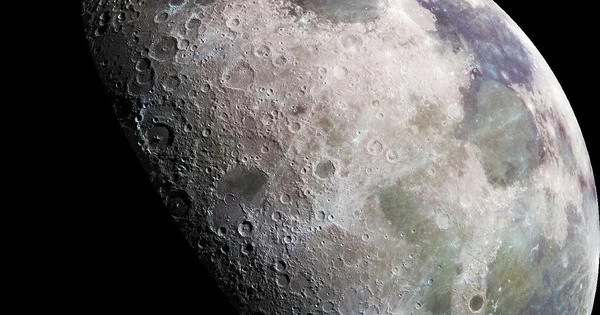The impact that formed the Moon’s South Pole — Aitken basin, according to new research, is linked to the striking disparity in composition and appearance between the two sides of the Moon. The Moon’s face as seen from Earth is very different from the one hidden on its far side. The lunar mare — enormous, a dark-colored leftover of previous lava flows — dominates the nearside. On the other hand, the crater-pocked far side is devoid of large-scale mare features. One of the Moon’s most intriguing mysteries is why the two sides are so different.
Researchers now have a fresh explanation for the Moon’s two faces: a massive impact billions of years ago near the Moon’s south pole. According to a new study published in the journal Science Advances, the impact that built the Moon’s vast South Pole-Aitken (SPA) basin would have generated a massive jet of heat that would have traveled throughout the lunar interior. That plume would have delivered some materials to the Moon’s nearside, including a suite of rare-Earth and heat-producing elements. This elemental concentration would have contributed to the volcanism that formed the nearside volcanic plains.
“We know that big impacts like the one that formed SPA would create a lot of heat,” said Matt Jones, a Ph.D. candidate at Brown University and the study’s lead author. “The question is how that heat affects the Moon’s interior dynamics. What we show is that under any plausible conditions at the time that SPA formed, it ends up concentrating these heat-producing elements on the nearside. We expect that this contributed to the mantle melting that produced the lava flows we see on the surface.”
The study was a collaboration between Jones and his advisor Alexander Evans, an assistant professor at Brown, along with researchers from Purdue University, the Lunar and Planetary Science Laboratory in Arizona, Stanford University and NASA’s Jet Propulsion Laboratory.
We know that big impacts like the one that formed SPA would create a lot of heat. The question is how that heat affects the Moon’s interior dynamics. What we show is that under any plausible conditions at the time that SPA formed, it ends up concentrating these heat-producing elements on the nearside.
Matt Jones
The variations between the near and far sides of the Moon were initially uncovered in the 1960s by the Soviet Luna missions and the US Apollo program. While differences in volcanic deposits are obvious, future missions will disclose variances in geochemical composition as well. The Procellarum KREEP terrane (PKT) on the nearside is a compositional anomaly including potassium (K), rare earth elements (REE), phosphorus (P), and heat-producing elements such as thorium. KREEP appears to be concentrated in and around Oceanus Procellarum, the largest of the nearside volcanic plains, but is scarce elsewhere on the Moon.
Some scientists have suspected a connection between the PKT and the nearside lava flows, but the question of why that suite of elements was concentrated on the nearside remained. This new study provides an explanation that is connected to the South Pole-Aitken basin, the second largest known impact crater in the solar system.

For the study, the researchers ran computer simulations of how heat caused by a massive impact would modify convection patterns in the Moon’s interior, and how this would redistribute KREEP material in the lunar mantle. KREEP is supposed to represent the last component of the Moon’s mantle to solidify after its formation.
As so, it most likely formed the outermost layer of mantle, just beneath the lunar crust. Models of the lunar interior show that it should have been more or less evenly dispersed beneath the surface. However, our new model demonstrates that the heat plume from the SPA impact would disturb the uniform distribution.
According to the model, the KREEP material would have surfed the heat wave emerging from the SPA impact zone. That debris was eventually transferred en masse to the nearside as the heat plume extended beneath the Moon’s crust. The researchers ran simulations for a variety of impact scenarios, ranging from a direct hit to a glancing blow. While each produced different heat patterns and mobilized KREEP to variable degrees, they all produced nearside KREEP concentrations, consistent with the PKT anomaly.
According to the researchers, their findings provide a reasonable answer for one of the Moon’s most enduring riddles. “The formation of the PKT is undoubtedly the most important open subject in lunar science,” Jones added. “And the South Pole-Aitken impact is one of the most significant events in lunar history. This work brings those two things together, and I think our results are really exciting.”





